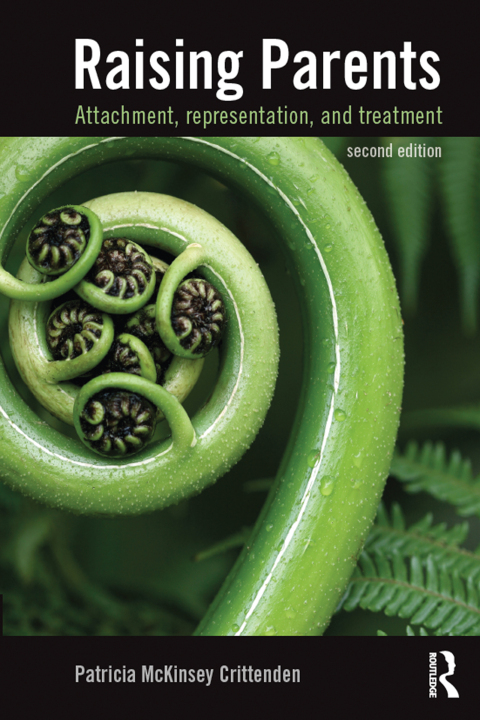Description
Efnisyfirlit
- Cover Page
- Half Title Page
- Title Page
- Copyright Page
- Dedication
- Contents
- List of illustrations
- Acknowledgements
- PART 1 Yesterday’s children Today’s mothers and fathers
- 1 Cherishing parents
- Helping professionals to help parents
- The Dynamic-Maturational Model of Attachment and Adaptation
- DMM Integrative Treatment
- Notes
- 2 A primer of DMM theory: twelve crucial constructs
- The context of life: from genes to culture
- Developmental possibilities: diversity and change
- Treatment of maladaptation
- Conclusions
- Important concepts and terms
- PART 2 Growing up
- 3 Early childhood: learning to be safe at home
- Protection, danger, and attachment figures
- Infancy (birth to 1–2 years)
- Preschool years (2–5 years of age): the preoperational shift and coy behavior
- Important concepts and terms
- Note
- 4 Going to school: coping with a complex world
- School age (approximately 6–12 years)
- Issues for children using a compulsive Type A strategy
- Issues for children using a coercive Type C strategy
- Issues for children using a Type A/C strategy
- Adolescence (puberty–16 years)
- Important concepts and terms
- 5 Becoming an adult: loving and leaving
- Transition to adulthood (16–25 years)
- Yesterday’s children
- Important concepts and terms
- PART 3 Information processing
- 6 Remembering the future: the process of mental representation
- Seven transformations of information
- Dispositional representations (DRs)
- Selection of a dispositional representation upon which to act
- Conclusions
- Important concepts and terms
- Notes
- 7 How do parents affect children’s representations?
- Representation and protective strategies
- Reorganization, trauma, depression, disorientation, and intrusions of forbidden negative affect
- How does perception of danger affect behavior?
- How do parents’ strategies affect children’s strategies?
- Important concepts and terms
- 8 Representation and childrearing that endangers children
- Why parents behave as they do
- Interpersonal disorders in children
- Assessing transformations of information and DRs
- A hypothesis and questions for future research
- Conclusions
- Important concepts and terms
- PART 4 Parents’ dispositional representations
- 9 Cluster 1 – distortions of normal child-protective behavior: under-responding to children
- Inconsistency from mixed dispositional representations (DRs)
- Inconsistency from competing mother and father DRs
- Inconsistency from distraction
- Couples’ issues and inconsistency
- Conclusions about Cluster 1
- Outcomes
- Important concepts and terms
- Note
- 10 Cluster 2 – distortions of normal child-protective behavior: over-responding to children
- Fear of loss: impairments and imagined medical threats
- ear of children doing the wrong thing: punishment and child abuse
- Immigrant populations
- Outcomes for children
- Conclusions
- Important concepts and terms
- 11 Cluster 3 – distortions of perception: seeing yourself in your child
- Comfort me/you: paternal incest
- Give me sugar: spousification
- Oh, no! I can’t!: mother’s compulsive performance and postnatal depression
- Never again – the long reach of unresolved trauma
- Conclusions
- Important concepts and terms
- 12 Cluster 4 – obscured perceptions: the disappearing child
- Depression and insufficient caregiving
- Unpredictable and changing dangerous parental behavior
- Triangulating parental behavior
- Disoriented parental behavior
- Important concepts and terms
- 13 Cluster 5 – distortions that substitute erroneous information for accurate information: misconstruing children as being threatened
- Kate and the Cutters: a hard rock in search of balance
- Perceived on-going threat
- Child death
- Understanding Cluster 5
- Important concepts and terms
- 14 Cluster 6 – distortions that substitute deadly delusional information for accurate information: misconstruing the child as the threat
- A Type A example
- A Type C example
- Child homicide
- Understanding parents who intentionally kill their children
- Preventing child deaths
- Important concepts and terms
- Note
- PART 5 An integrative approach to treatment
- 15 DMM Integrative Treatment with families
- A rationale for DMM Integrative Treatment
- Beginning the process of DMM Integrative Treatment with parents
- Using attachment to promote the goals of therapy
- Adaptation
- Important concepts and terms
- Notes
- 16 When things fall apart
- Problems in treatment
- Alternatives to out-of-home placement
- IASA Family Attachment Court Protocol
- Foster care and out-of-home placement
- Research to learn what we do not now know
- Important concepts and terms
- 17 Assessment that is relevant to differential treatment
- What sort of assessment is needed?
- What we need to know before beginning treatment
- What is assessment?
- Assessing attachment and information processing
- Contraindications: avoiding the wrong treatment
- On-going assessment following formal assessment
- Important concepts and terms
- 18 Functional formulation and the plan for treatment
- Functional formulation
- The components of a functional formulation
- Constructing the functional family formulation
- The role of professionals
- Attachment, critical causes, and case planning
- Important concepts and terms
- 19 DMM Integrative Treatment: three cases
- Mild and transient dysfunction (normal parenting)
- Moderately severe dysfunction (Cluster 3)
- Severe parenting dysfunction (Cluster 5)
- Conclusions
- Important concepts and terms
- Notes
- 20 Do unto parents as you would have them do unto their children
- DMM Integrative Treatment
- Parenting, survival, and culture
- Ten ideas
- From survival through healing to living
- Important concepts and terms
- References
- Index






Reviews
There are no reviews yet.